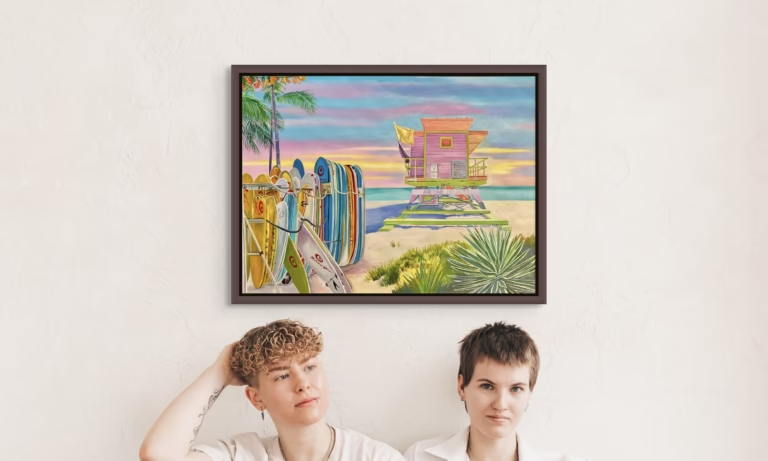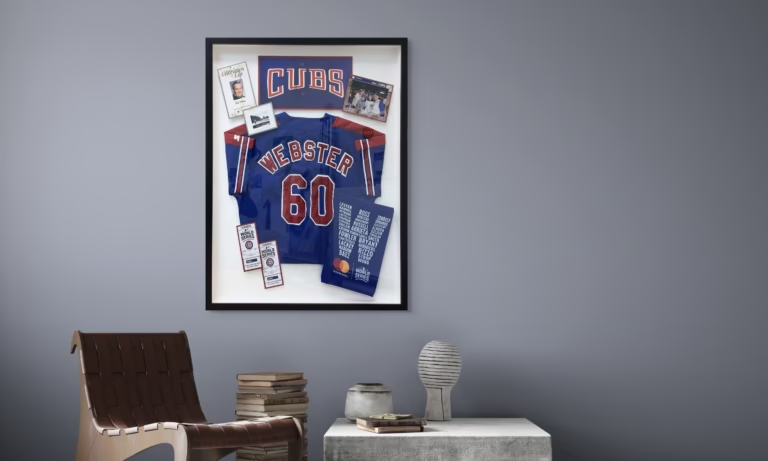What is a Floater Frame?
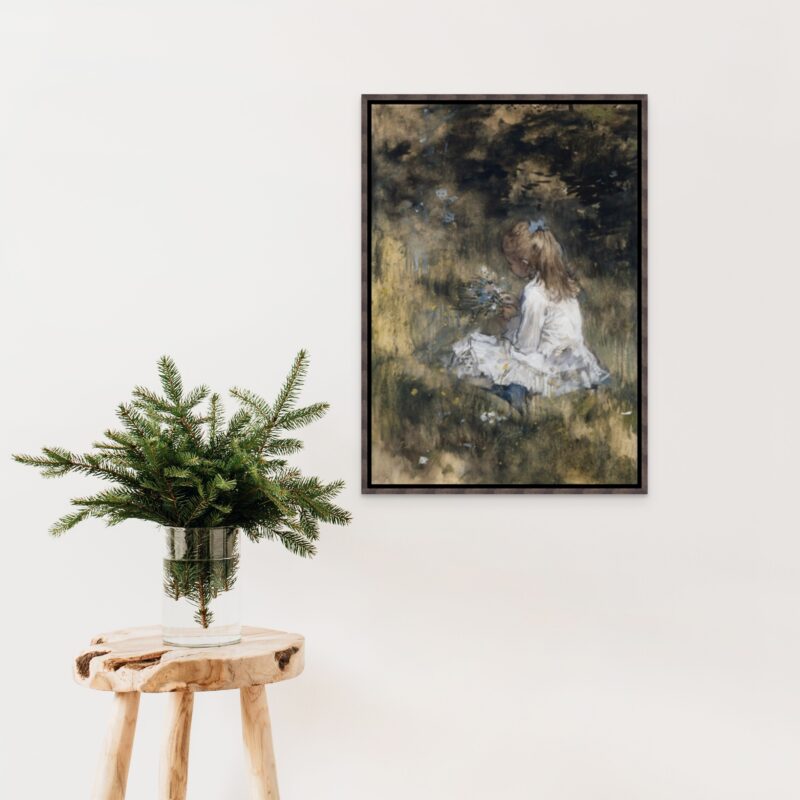
What is a Floater Frame?
Often seen in art galleries and contemporary homes, floater frames have become a popular choice for displaying artwork. But what exactly is a floater frame, and when should it be used?

When to Use a Floater Frame?
Typically, a floater frame is used for framing wrapped canvas. To understand when or why to use a floater frame, you must first understand the characteristics of a wrapped canvas.
When wrapping a canvas, the fabric (usually cotton or linen) is stretched over a wooden frame called a stretcher bar. The key feature is that the canvas is wrapped around the sides of this stretcher bar and secured to the back, either by staples or adhesive.
If the image has been printed onto the canvas, it can be extended around the sides of the stretcher bar. It can also be “mirror wrapped,” which mirrors the edge of the image and wraps it over the side for a reflection-like appearance. Both styles create a continuous look that enhances the quality of the artwork.
Unstretched canvas paintings need at least 2” of blank canvas at their border in order to stretch them without any paint cracking. If the canvas was stretched before painting, the artist will often paint the sides as well.
A wrapped canvas doesn’t require an external frame for display. The artwork is ready to hang on the stretcher bar as soon as the stretching is complete, presenting a simpler look where the focus remains entirely on the artwork itself. However, a floater frame is probably the best option if you frame your wrapped canvas.
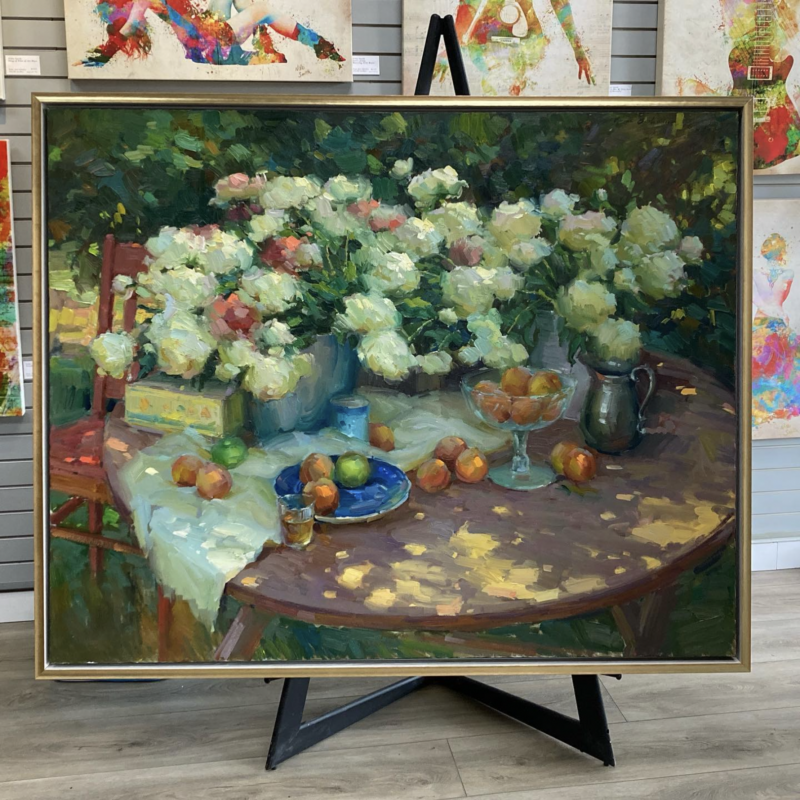
Why Choose a Floater Frame for Wrapped Canvas?
- Artwork enhancement: A floater frame highlights and enhances your artwork, drawing attention to it.
- Visible edges: If a wrapped canvas artwork features painted or printed edges, the floater frame allows these edges to remain visible while framed.
- Modern Aesthetic: With their sleek design, floater frames complement contemporary, modern, and minimalist decor styles, giving wrapped canvas works a polished presentation.
- Protection: While showcasing the entire artwork, floater frames also provide a protective boundary around the wrapped canvas, safeguarding it in case it falls off the wall.
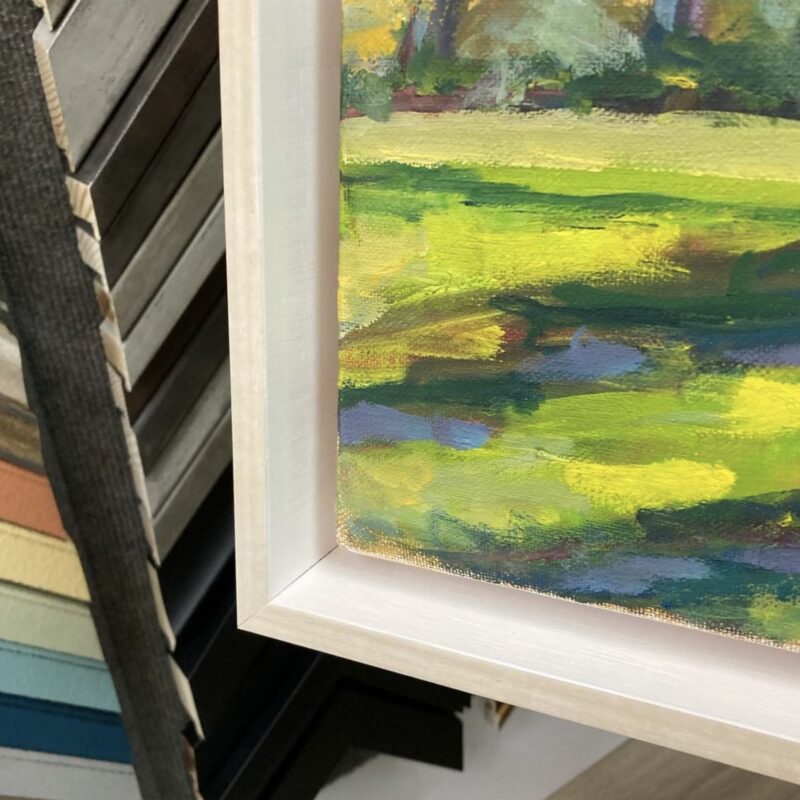
The Concept of “Floating”
The term “floater frame” originates from the illusion it creates: the artwork, typically a canvas wrapped around a stretcher bar, appears to ‘float’ within the outer frame. In this design, the wrapped canvas never touches the outer floating frame.
Unlike traditional frames, where the frame or a mat covers the edges of the artwork, a floater frame usually leaves a small gap between the frame and the artwork. This gap,
typically ranging from ¼ to ⅛ of an inch, creates a shadow border that accentuates the art’s edges, giving it its floating appearance.
It’s important to note that a floater frame does not need to leave a gap between the artwork and the frame. If the display would look better without showing the artwork’s edges, the frame can rest up against the sides of the canvas.
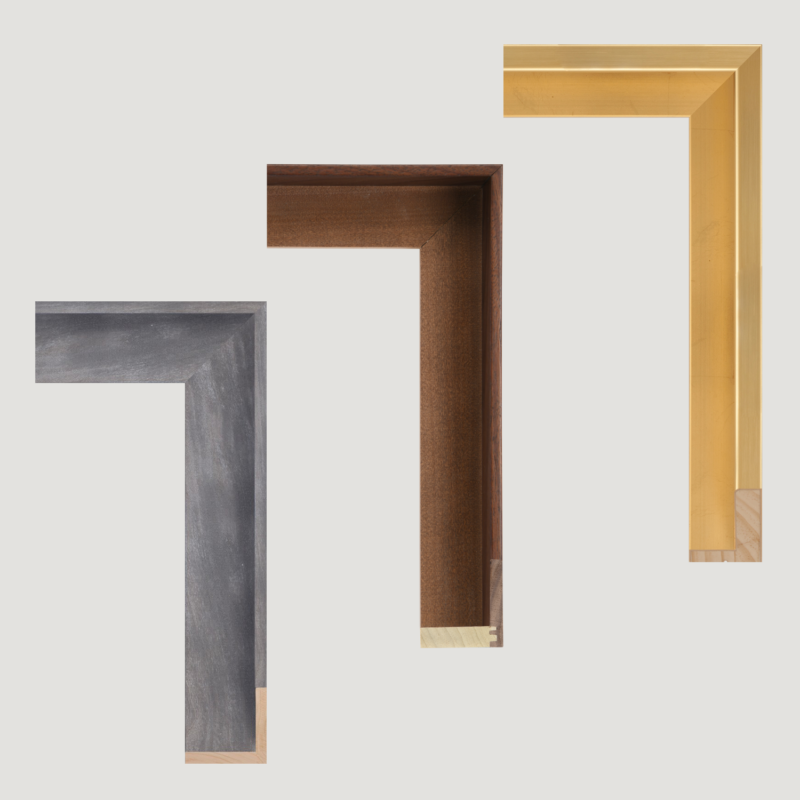
Design and Construction
Floater frames are designed with a minimalist approach. They are typically made of wood, featuring clean lines and a simple structure. The frame is deeper than a standard picture frame, allowing the stretcher bar to sit recessed at the back.
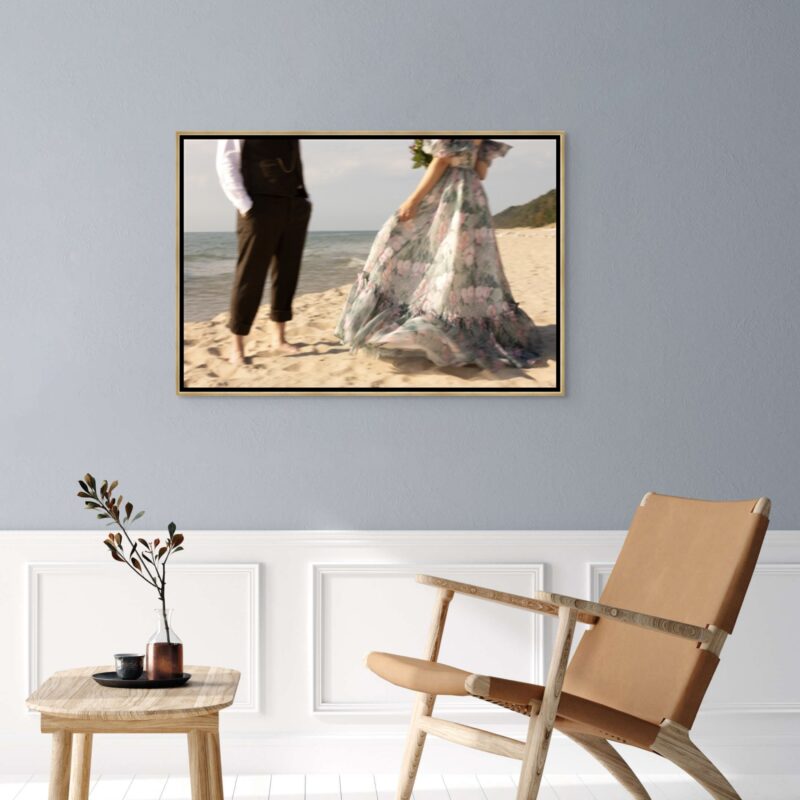
Types of Art Suited for Floater Frames
- Canvas paintings: Particularly effective for stretched canvases, a floater frame showcases the entire painting, including the sides where the blank canvas wraps around the stretcher bar.
- Mixed media art: A floater frame enhances depth and dimension by distancing the art from the wall.
- Photography on canvas: This style adds a sophisticated touch to photographic prints on canvas.
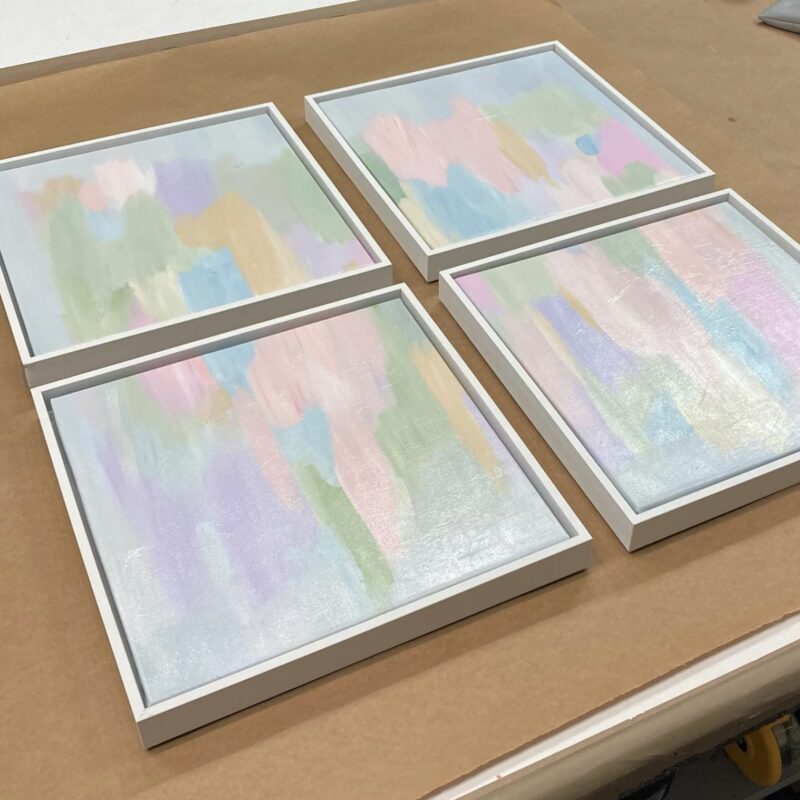
Installation and Care
Installing artwork in a floater frame requires careful centering to ensure an even gap on all sides. We advise contacting a local framing professional to help with this. While floater frames are generally low maintenance, regular dusting and occasional checks for secure fittings are recommended.
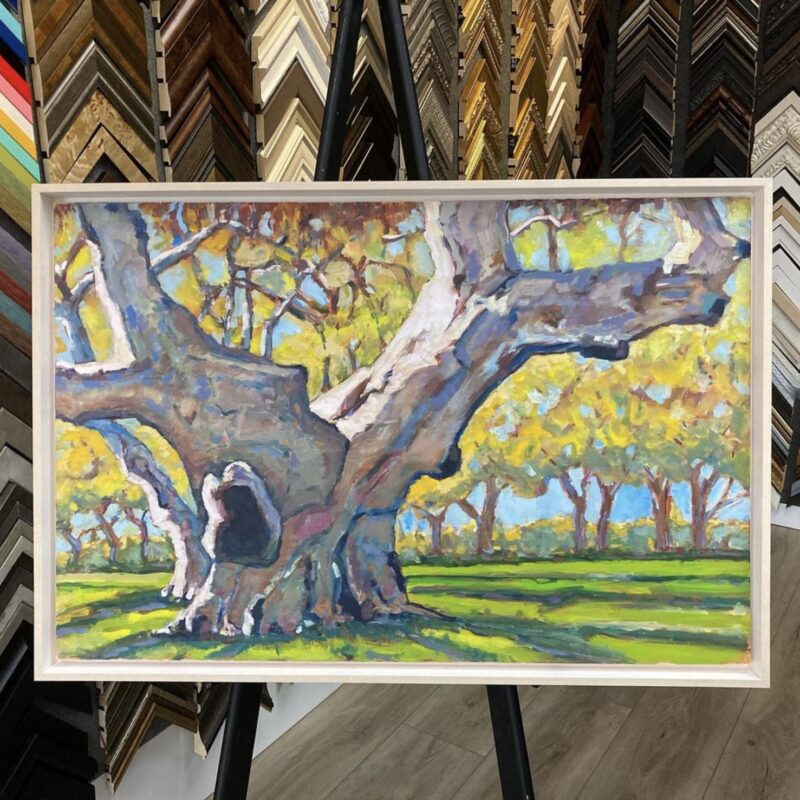
Are Floater Frames Glazed?
Floater frames are not glazed. The primary design intent of a floater frame is to create an illusion of the artwork floating within the frame without any covering on the front. This design allows for an uninterrupted view of the artwork, emphasizing its edges and surface texture. However, this also means that the artwork in a floater frame is more exposed to environmental factors like dust, moisture, or even human contact than in traditionally glazed frames.
Custom solutions can incorporate a protective covering for delicate or valuable artworks while maintaining a floater frame’s aesthetic. You should consult with a professional local framer for those custom options.
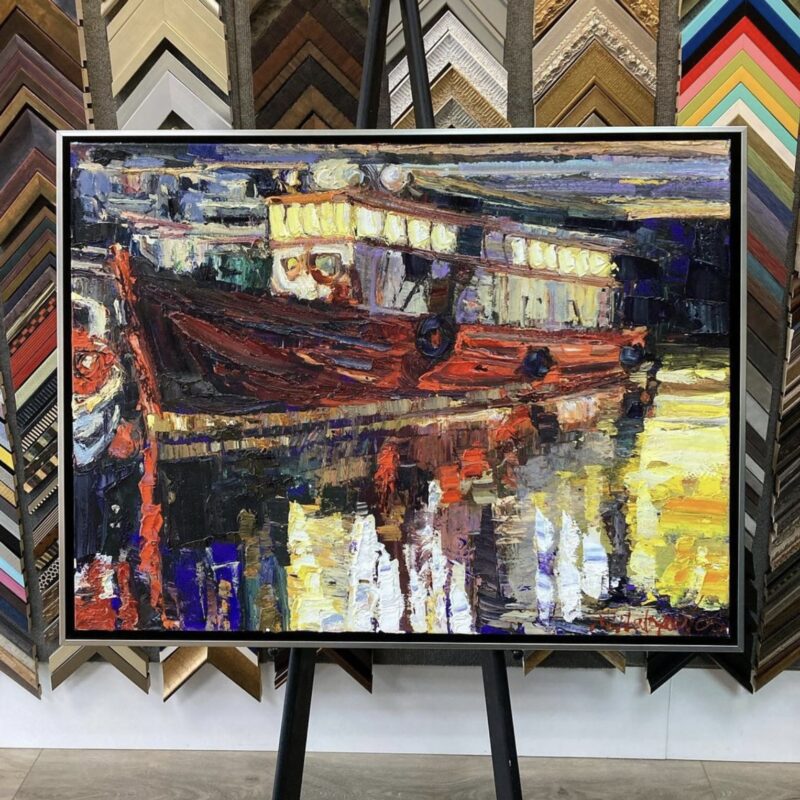
Is Matting Used with Floater Frames?
Floater frames are not used with matting. The design concept of a floater frame differs significantly from traditional framing methods that employ matting. Matting is commonly used with artworks on paper or photographs framed under glass. In contrast, floater frames are primarily used for stretched canvas wrapped around a stretcher bar or panel artworks, which have a significant depth and don’t pair well with matting.
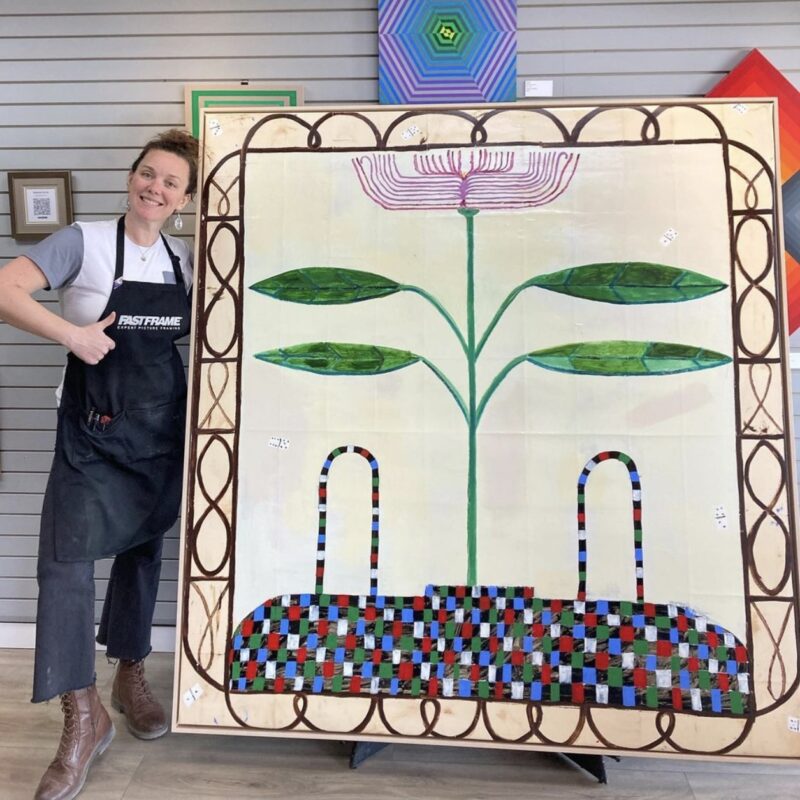
Where Can I Get a Floater Frame?
Floater frames are available at various framing stores and art supply shops. FastFrame is one such option with stores across the country. We can advise on the best framing solutions and develop custom frames according to your specifications. To find your local FastFrame store, just click here.


